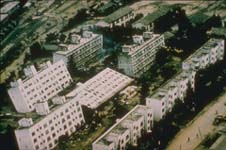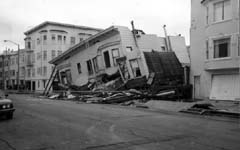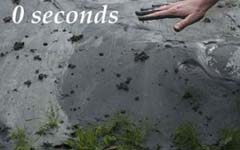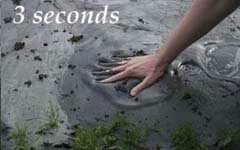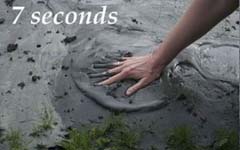Find more from ResearchGate.net. Also about the Author Dr. Fred Yi.
- Procedures to Evaluate Seismic Settlement in Dry Sand Based on CPT Data – An Update
- Case Study of Liquefaction Mitigation by Compaction Grouting
- Simulation of Liquefaction and Consequences of Interbedded Soil Deposits Using CPT Data
- Estimation of Shear Wave Velocity Based on SPT Profile Data
- Estimating soil fines contents from CPT data
- Seismic Design of Restrained Rigid Walls
- Case Study Of CPT Application To Evaluate Seismic Settlement In Dry Sand
- Procedure To Evaluate Liquefaction-Induced Settlement Based On Shear Wave Velocity
- Procedure To Evaluate Seismic Settlement In Dry Sand Based On Shear Wave Velocity
- Procedure To Evaluate Liquefaction-Induced Lateral Spreading Based On Shear Wave Velocity
- Nonlinear Cyclic Characteristics Of Soils
- Seismic Earth Pressures Under Restrained Condition
- A Simple Method for the Design of Pile Groups
- Behavior of Compacted Collapsible Soils Subject to Water Infiltration
1. Procedures to Evaluate Seismic Settlement in Dry Sand Based on CPT Data – An Update (2022 CPT’22)
ABSTRACT: The seismic settlement of dry sands becomes one of the major geological hazards in areas where loose sandy deposits exist, and groundwater is relatively deep as human activities and urban development moving towards these areas. Research related to the evaluation of seismic settlement of dry sand seems paused for a period since pioneer work of Silver and Seed (1971) in the early 1970’s. Later research related to the topic was found by Tokimatsu and Seed (1987) and Pradel (1998). Both papers were based on the use of Standard Penetration Test (SPT). Yi (2010) was the first attempting to evaluate the seismic settlement of dry sand using Cone Penetration Test (CPT) data. In this paper, the procedures to evaluate seismic settlement in dry sand based on CPT data was summarized and the relationship between volumetric strain and cyclic shear strain was updated for CPT data by considering various effects such as fine contents and overburden pressure based on the most recent research findings.
2. Case Study of Liquefaction Mitigation by Compaction Grouting (2020 ISC’6)
ABSTRACT: Ground improvement is one method used for liquefaction mitigation. Various ground improvement techniques , such as vibro-compaction, vibro-replacement stone columns and grouting are used in construction to mitigate liquefaction. Varying methods of mitigation have different advantages and limitations. In this paper, the effectiveness of liquefaction mitigation using compaction grouting is evaluated by the comparison of pre-and post-grouting cone penetration testing (CPT) results. Detailed discussions of the factors affecting the evaluation of post-grouting performance of the compaction grout method are made. In the comparison of pre-and post-grout CPT data, a pseudo-sandification phenomenon was noticed. A correction method for this pseudo-sandification phenomenon is proposed. Future research needs and improvements used for liquefaction mitigation using compaction grouting are also discussed.
3. Simulation of Liquefaction and Consequences of Interbedded Soil Deposits Using CPT Data (CPT’18)
ABSTRACT: Several corrections have been proposed since 1990s for the interpretation of liquefaction potential and anal-ysis of the consequences of liquefaction based on cone penetration test (CPT) measurements. However, few publications address how these factors affect the calculation results. In this study, extensive studies of soil liquefaction and its consequences were performed using selected CPT data from two sites located within 7 km of the fault rupture of the 1999 Kocaeli, Turkey earthquake (Mw = 7.5). The effects of thickness of in-terval for averaging, thin layer correction and transition zone were examined in detail.
4. Estimation of Shear Wave Velocity Based on SPT Profile Data (2016 ISC’5)
ABSTRACT: In most of the early studies, researchers correlated shear wave velocity with Standard Penetration Test blowcounts (e.g., Kanai 1966 and Ohta & Goto 1976). Later, the correlations developed by various researchers (e.g., Ohta & Goto 1978; Andrus et al. 2004, Branderburg et al., 2010; and Wair et al., 2012) directly or indirectly took into account the effect of overburden pressure. The authors of this paper found that the fines contents, also the mean grain size, of the soils play an important role in the estimation of shear wave velocity. In this paper, predictive equation for estimating shear wave velocity based on SPT profile data including SPT blowcounts (N60), fines contents (FC) and normalized mean effective confining stress (σm‘/Pa) are presented. The equation was developed based on a statistical analysis of 179 valid data sets obtained from northern to southern California from soil profiles predominated with clean sands, silty sands or sandy silts. The comparison of measured and calculated shear wave velocities indicates a better prediction by the proposed equation than existing methods for soils varied from clean sand to sandy silt with low plasticity.
5. Estimating soil fines contents from CPT data (CPT’14)
ABSTRACT: In order to verify soil property correlations between Standard Penetration Test (SPT) and Cone Penetration Test (CPT) results, a specially designed field investigation and laboratory testing program was implemented. The field exploratory investigation program included grouped SPT and CPT explorations at selected locations. Each test group included two hollow-stem auger borings utilizing a standard penetration sampler and a modified California sampler, respectively, and a seismic CPT sounding. These SPT borings and CPT sounding were placed at the vertices of a triangle around which a circle with a diameter approximately 3m (10 feet) could be circumscribed. This paper presents the results of the comparison between laboratory measured fines contents and the calculated fines contents based on CPT data interpretation. From this information, a new empirical relationship is proposed. A comparison with published data from various papers and reports indicates that this proposed new relationship appears to provide a more reasonable estimation of fines contents of soils.
6. Seismic Design of Restrained Rigid Walls (2013 ISSMGE)
ABSTRACT: In current practice, the increment of seismically induced earth pressure on a rigid, non-yielding wall is generally taken as the product of seismic coefficient (kH) and the soil mass behind the wall, ΔPE=kHγH2, as developed by Wood (1973) and modified by Whitman (1991). Wood’s study and most of the research thenceforth were based on the assumption that the wall and the retained soil are connected to a rigid base. This assumption neglects the fact that comparing to the mass mobilized by an earthquake, the size of the wall and its retained soil are relatively small. In other words, even though the wall is connected to a relatively rigid base, the base exhibits certain movement during an earthquake. In addition, there is much disagreement in current practice related to the value of kH used with respect to the relationship to peak ground acceleration (PGA). In this study, a series of elasto-plastic pseudostatic finite element analyses were performed to assess the appropriateness of the Wood (1973) equation for determining the seismically induced lateral earth pressures on the stem of the restrained wall, and relationships were established between and PGA based on the momentum conservation law. The results indicate that the increment of seismic earth pressure acting on non-yielding wall is a function of and the supporting condition. They also indicate that a value of kH of 25% of PGA seems reasonable and somewhat conservative for the design of normal structures.
7. CASE STUDY OF CPT APPLICATION TO EVALUATE SEISMIC SETTLEMENT IN DRY SAND (CPT’10)
ABSTRACT: Interpretations of geotechnical parameters based on Cone Penetration Test (CPT) data were performed and compared with Standard Penetration Test (SPT) data and laboratory testing results collected from various sites in California. Specific attention was paid to the estimation of fines content and conversion of CPT data to SPT (N1)60 blowcounts since they are often needed in seismic settlement evaluation of dry sand for the use of Pradel’s (1998) method. A new relationship between volumetric strain, cyclic shear strain, and normalized tip resistance was derived based on the laboratory test data of Silver and Seed (1971) for dry clean sands. An example of the proposed CPT-based method is presented with a comparison to the results calculated using Pradel’s original method as well as with the results based on SPT data from adjacent borings.
8 PROCEDURE TO EVALUATE LIQUEFACTION-INDUCED SETTLEMENT BASED ON SHEAR WAVE VELOCITY (9USN/10CCEE)
ABSTRACT: As a major geologic hazard, evaluation of liquefaction-induced settlement is very important for the design of structures. Extensive research has been performed on the calculation of liquefaction-induced settlement based on the standard penetration test (SPT) and cone penetration test (CPT) data by various researchers (Tokimatsu & Seed, 1987; Zhang et al., 2002; Idriss & Boulanger, 2008). However, few published papers can be found that address the calculation of liquefaction-induced settlement based on shear wave velocity. This paper presents a new empirical relationship between the post-liquefaction volumetric strain of clean sands and corrected shear wave velocity, (Vs1)cs, based upon the works of Ishihara and Yoshimine (1992) and Yoshimine et al (2006). A detailed procedure to evaluate post-liquefaction settlement is discussed. The results are compared with observed data and those results based on SPT and CPT data utilizing existing methods. This approach not only provides a new method to estimate the liquefaction-induced settlement based directly on shear wave velocity data but also provides a cost effective tool for verifying CPT data with a small cost increase to measure shear wave velocity during the standard CPT testing.
9. PROCEDURE TO EVALUATE SEISMIC SETTLEMENT IN DRY SAND BASED ON SHEAR WAVE VELOCITY (9USN/10CCEE)
ABSTRACT: Seismic settlement in dry sands is a major hazard especially in inland and desert areas where loose sandy deposits exist and groundwater is relatively deep. Other than research performed for liquefaction-induced settlement, studies on seismic settlement of dry sand are limited although Silver and Seed (1971) began to pioneer the work in the early 1970’s. Moreover, most of the existing methods for estimating seismic settlement in dry sands are based on the standard penetration test. This paper presents a new method for evaluating seismic settlement in dry sand based on shear wave velocity. A detailed procedure, including the calculations of cyclic shear strain and volumetric strain, is discussed. Special attention is paid to the discussion of the relationship between relative density and shear wave velocity and the limiting volumetric strain. A case study is provided to illustrate the application of the procedure.
10. PROCEDURE TO EVALUATE LIQUEFACTION-INDUCED LATERAL SPREADING BASED ON SHEAR WAVE VELOCITY (5th GeoEqConf2010)
ABSTRACT: Evaluation of liquefaction-induced lateral spreading is very important for the design of structures located on gently sloping ground and with relatively shallow groundwater. Extensive research has been performed on the calculation of liquefaction-induced lateral spreading based on the standard penetration test (SPT) and cone penetration test (CPT) data by various researchers (Bartlett and Youd 1992, 1995, Rauch, 1997; Zhang et al., 2004; Idriss and Boulanger, 2008). However, few published papers can be found that address the calculation of liquefaction-induced lateral spreading based on shear wave velocity. This paper presents a procedure to evaluate liquefaction-induced lateral spreading directly based on shear wave velocity. New empirical relationships for factor of safety against liquefaction, maximum shear strain, and shear wave velocity are developed based on the laboratory tests performed at the University of Tokyo (Ishihara and Yoshimine 1992, Yoshimine et al. 2006). The results calculated utilizing this new procedure are compared with those based on SPT and CPT data using existing methods. The results indicate good agreement. This approach not only provides a new method for estimating the liquefaction-induced lateral spreading directly from shear wave velocity data but also provides a cost effective tool for verification of CPT results because of the small cost increase in measuring shear wave velocity during the standard CPT testing.
11. NONLINEAR CYCLIC CHARACTERISTICS OF SOILS (ASCE GeoFlorida 2010)
ABSTRACT: For this paper, research on nonlinear cyclic characteristics of soils was reviewed. A new model is presented consisting of a modified equation for an initial loading curve and a modified equation for constructing the hysteresis loop. The performance of the model was evaluated by simulating the frequently utilized relationships of shear modulus versus shear strain and damping ratio versus shear strain of various types of soils accumulated over the past decades. The outcomes indicated that the new model presented describes the measured relationships with excellent correlations. The new model can simulate not only the work-hardening, but also work-softening behaviors of soils.
12. SEISMIC EARTH PRESSURES UNDER RESTRAINED CONDITION
ABSTRACT: In the “Recommended Provisions for Seismic Regulations for New Buildings and Other Structures (FEMA 450)”, 2003 edition, NEHRP presents an equation developed by Wood (1973) for a rigid non-yielding wall retaining a homogeneous linear elastic soil and connected to a rigid base, ΔPE=FkHγH2. Whitman (1991) further suggested that the value of F is approximately equal to unity. However, even for a non-yielding wall, the wall should move together with the supporting base during an earthquake event. In this study, a series of elasto-plastic pseudostatic finite element analyses were performed to assess the appropriateness of the Wood (1973) method for determining the seismically induced lateral earth pressures on the stem of the restrained wall. The results indicate that the seismic increment of earth pressure acting on non-yielding is a function of pseudostatic seismic coefficient, kH, and supporting condition. It is also found that the value of F of 1/3 is more reasonable for the design of normal structures.
13. A Simple Method for the Design of Pile Groups (ISLSD 93)
(This paper was published in International Symposium for Limit State Design in Geotechnical Engineering, Copenhagen, 1993. I’m recently asked about the group effects for lateral capacity of pile groups. So I post it here for reference.)
SYNOPSIS: In the current Specifications for Highway Bridges of Japan, no pile-soil-pile interaction is considered in the design of pile groups when the ratio of pile sparing, s/D, is larger than 2.5. An average value of the lateral load is taken as the load acted on each pile. However, the in-situ test results show that, as the lateral load acted on pile groups increases and large deformation occurs, strong interaction appears and the load acted on each pile is far from mean distributed. In this paper, a new concept that the stiffness of soil in the regions between the rows of piles degrades during deformation has been proposed. In cooperating with Poulos’ definition of interaction coefficient of piles and Randolph’s equations, the new method gives satisfactory agreement of the load distributions with measured data.
14. Behavior of Compacted Collapsible Soils Subject to Water Infiltration (PhD Dissertation 1991)
ABSTRACT: The wetting-induced volume change of compacted collapsible soils and their strength and deformation characteristics under monotonic and cyclic loading conditions when subjected to water infiltration were presented in this study. In order to obtain representative test results, the experimental investigation was carried out on five types of materials: a mixture of commercially available Toyoura sand and kaolinite in proportion of 1:0.15 in weight, and two silty and two clayey sands sampled from manufactured fills. …


